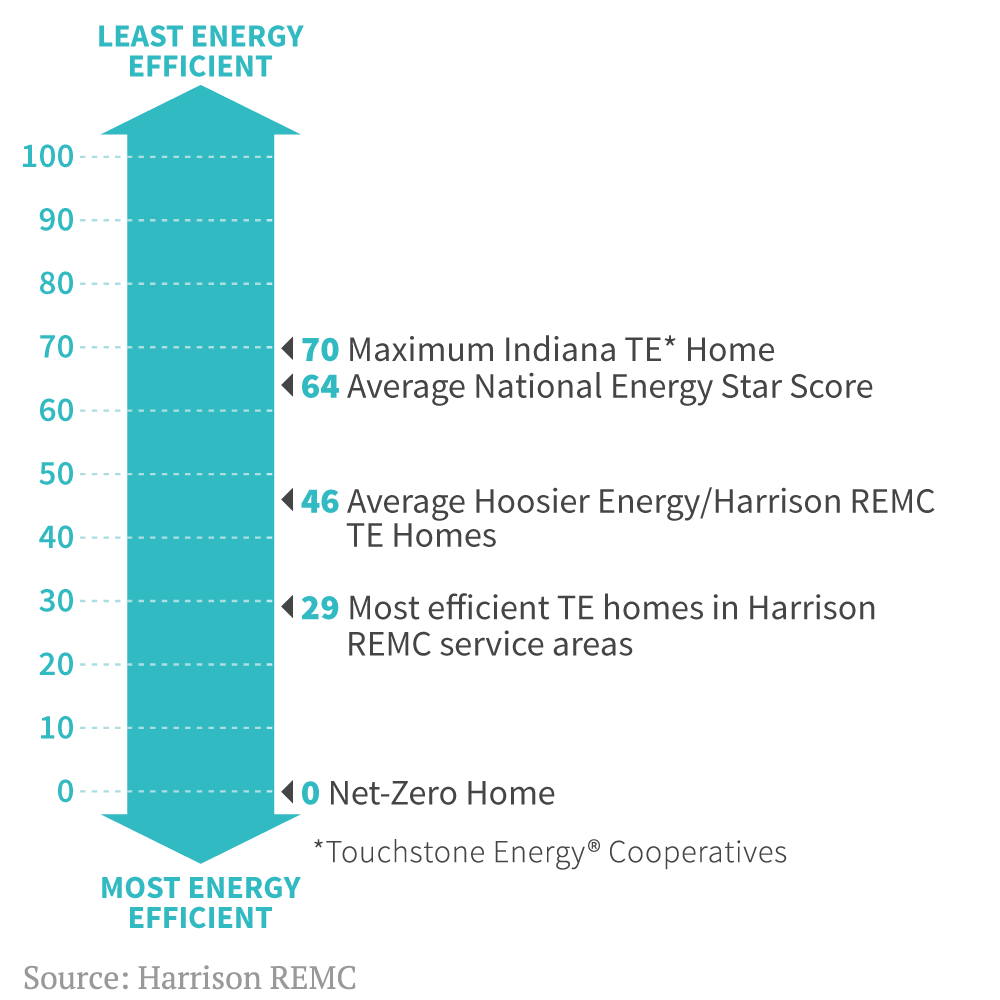Indiana homeowners Randy and Cathy Sherrod don’t consider themselves environmentalists, but they worry about the Earth their three grandchildren will inherit.
“We love our country, but there are some great needs, and we haven’t been doing much. It’s not about us, it’s about the kids,” said Cathy Sherrod. “We were thinking, ‘How can we reduce our energy footprint?’ ”
The couple’s solution, building an energy-efficient house, was a winner. Their Touchstone Energy® Cooperatives Home in Depauw is one of the state’s most energy efficient, local building professionals have said, and likely has some of the lowest heating and cooling bills at less than $400 per year.
Richard Gettelfinger, Cathy’s brother and a builder of modular homes in southern Indiana, helped the couple build the all-electric house. “Their electric bill is incredible and it’s a good feeling knowing that you’re living in a home that’s good for the environment.”
Gettelfinger referred the couple to Harrison REMC’s High Performance Home series of free monthly seminars.
All three learned the five key areas of a high performance home and how they work together: effective foundations, air sealing, windows and doors, insulation and correct size of HVAC equipment.
“The challenge for me was to have the concept of high-performance homes make sense to them because building requirements aren’t for the price-conscious,” said Gettelfinger. “If you are going to build a house based on cost, you won’t pay for it. It’s an investment.”
Corydon-based Harrison REMC doesn’t track the number of houses built with the energy-efficiency standards. “But of the 2,500 folks who have attended the seminars, not one has called to say their home is not performing as they expected,” said instructor Bob Geswein, the co-op’s energy services advisor.
Gettelfinger and the Sherrods finished the 3,200-square-foot home in 2007, after the couple’s relocation from Wichita Falls, Texas, where energy bills sometimes hit $400—that’s per month, not per year.
Like the hundreds of other Touchstone Energy-certified homes in Harrison REMC’s service area, several inches of Styrofoam and foam insulation and gallons of caulk seal the structure’s nooks, crannies and seams from even a hint of drafty air.
“The most important thing we did besides treating the footers with water proofer was putting four inches of foam insulation under the concrete” foundation,” said Gettelfinger. “There is only a one-degree difference between the upstairs and downstairs.”
High-performance homes tend to cost more to build and it’s hard to find formal instruction in the co-op’s five-county service area in southern Indiana and in nearby Louisville, Ky.
Harrison REMC has emerged as a trusted adviser in giving a “real-time snapshot of the practice,” said Charles Smith, executive officer of the Building & Development Association of Southern Indiana.
“While there are Green Builder Certifications offered from the National Association of Home Builders, Harrison REMC focuses on how building in the state of Indiana with our codes and standards equates into building a High Performance Home.”
Randy and Cathy Sherrod’s home became a family project and friends and family took turns applying 180 tubes of caulk, making sure every seam was sealed.
“When we started, we didn’t understand the real benefits that were ahead of us,” said Cathy. “It was a lot of work, but it was worth it. You go halfway or no way. We went all the way.”
Victoria A. Rocha is a staff writer at NRECA.
